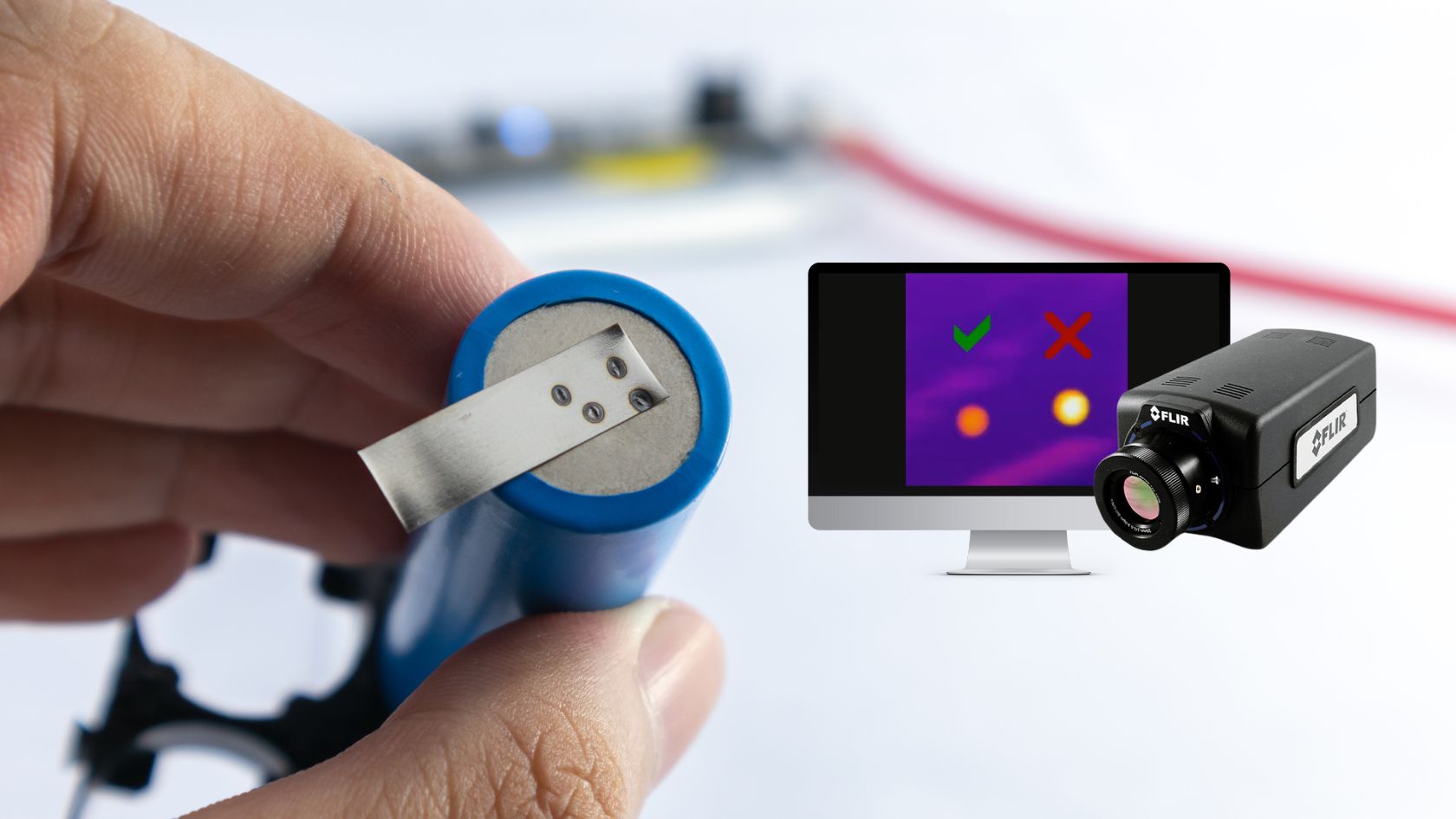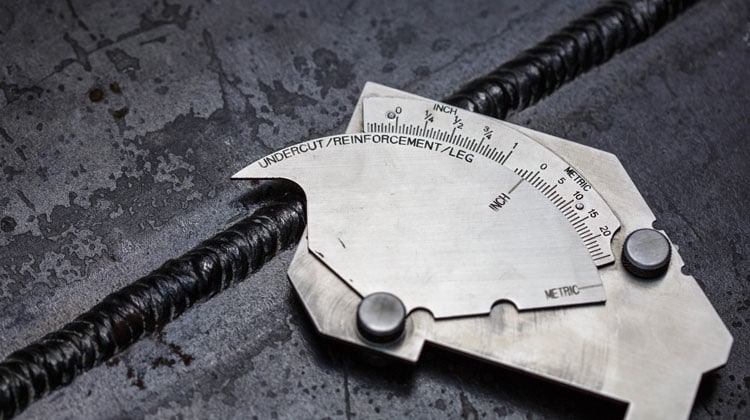Discovering Advanced Tools and Methods for Accurate Welding Evaluation
In the realm of welding examination, the pursuit of precision and dependability is critical, stimulating the advancement of advanced tools and techniques. Technologies such as phased range ultrasonic testing and digital radiography are reinventing issue detection, using unrivaled precision in identifying welding flaws. Additionally, laser scanning advancements and automatic assessment systems, furnished with expert system, are redefining the landscape by minimizing human mistake and enhancing safety and security measures. As these innovative strategies remain to advance, they guarantee not just to change inspection techniques but additionally to elevate appealing questions concerning the future of quality control in commercial applications.
Ultrasonic Testing Technologies
Ultrasonic testing innovations often stand for the leading edge of innovations in welding assessment technologies. These technologies have actually considerably enhanced the capacity to spot and examine discontinuities within welded frameworks, making sure improved stability and safety - Welding Inspection Madison. Ultrasonic testing utilizes high-frequency audio waves to permeate products, giving thorough information regarding inner features without causing damage. The most recent developments in this field have concentrated on enhancing precision, speed, and the capacity to interpret complex data.

Additionally, developments in software application algorithms for information analysis have actually enhanced the accuracy of problem detection and sizing. Automated ultrasonic testing systems now use high-resolution imaging, enabling comprehensive assessments of weld top quality. These systems are often integrated with innovative visualization tools, which promote the interpretation of outcomes.
Radiographic Evaluation Techniques
While ultrasonic screening developments have actually established a high standard in non-destructive assessment, radiographic inspection methods proceed to play an indispensable duty in welding inspection by supplying distinct insights into product stability. Radiographic screening (RT) employs the use of X-rays or gamma rays to penetrate materials, producing a radiograph that aesthetically stands for the internal structure of a weld. This imaging ability is very useful for finding subsurface defects such as porosity, additions, and fractures that might not be noticeable through surface area inspections.
The procedure includes positioning a radiation source on one side of the weld and a detector on the contrary side. Variants in material density and thickness affect the depletion of the rays, creating a contrasting picture that exactly defines imperfections. RT is particularly beneficial for examining thick sections and complicated geometries where other approaches might fail.
In spite of its efficiency, radiographic examination has to be performed with rigorous adherence to safety and security procedures because of the harmful nature of ionizing radiation. The analysis of radiographs calls for skilled personnel, as the quality of the evaluation straight affects the dependability of the assessment. Recurring improvements in electronic radiography are improving image clearness and interpretation effectiveness, reinforcing RT's essential function in making certain weld high quality.
Laser Scanning Advances
Accepting laser scanning technology in welding assessment has changed the assessment of weld high quality Get More Info and honesty. This sophisticated approach provides a non-contact, high-resolution ways of capturing in-depth 3D information of weld surfaces. Unlike traditional examination methods, laser scanning gives rapid data procurement, considerably boosting the efficiency and precision of weld analyses. The technology utilizes laser beam of lights to develop precise 3D models, which are vital for in-depth analysis of weld dimensions, surface irregularities, and prospective issues.
Laser scanning advances have resulted in substantial renovations in defining and detecting surface area defects such as porosity, lack of blend, and damages. The high-resolution information allows assessors to do extensive analyses, ensuring that welds meet rigorous sector criteria. In addition, this approach supports the advancement of digital documents, promoting lasting quality control and traceability.
Furthermore, laser scanning modern technology integrates perfectly with software services created for automated flaw detection and assessment. The resultant useful content information can be easily shared and assessed, advertising collaborative decision-making procedures. As markets continue to demand higher criteria for weld high quality, laser scanning continues to be at the forefront, using unmatched precision and effectiveness in welding evaluation.
Automated Examination Systems

Automated assessment systems use the benefit of consistency, removing human error and subjectivity from the evaluation procedure. They are created to operate in numerous settings, from production floors to remote area sites, guaranteeing thorough protection. Welding Inspection Madison. These systems can be configured to follow particular welding standards and requirements, supplying comprehensive records and paperwork for quality assurance functions
Additionally, the integration of cloud-based systems helps with the storage and analysis of huge amounts of assessment data. This allows pattern evaluation and anticipating maintenance, enabling producers to address prospective concerns before they rise. The fostering of automatic inspection systems is a crucial relocation in the direction of enhancing the dependability and efficiency of welding processes in commercial applications.

Enhancing Security and Performance
A significant aspect of boosting safety and security and performance in welding inspection hinges on the integration of cutting-edge technologies that improve operations and alleviate dangers. The adoption of advanced non-destructive screening (NDT) methods, such as ultrasonic testing, phased range ultrasonic screening (PAUT), and radiographic screening, plays an essential role in ensuring structural integrity without compromising the security of the workers entailed. These methods permit for extensive evaluations with minimal downtime, reducing potential risks connected with conventional methods.
In addition, the execution of real-time information analytics and equipment discovering algorithms has actually changed the way assessment information is translated. By utilizing predictive analytics, prospective issues can be recognized before they show up right into essential failings, guaranteeing timely interventions and maintenance. This aggressive method considerably boosts functional efficiency and security in welding processes.
In addition, remote evaluation pop over to these guys modern technologies, consisting of drones and robotic spiders equipped with high-resolution video cameras, make it possible for assessors to examine hard-to-reach locations without revealing them to hazardous conditions. This not just improves evaluation precision however also reduces human danger. By leveraging these innovative devices and techniques, sectors can achieve greater safety and security requirements and functional performance, ultimately resulting in even more lasting and trustworthy welding inspection methods.
Final Thought
The integration of innovative devices and approaches in welding evaluation considerably enhances issue detection and ensures architectural honesty. These developments not only enhance inspection performance however additionally add to boosted safety and top quality guarantee in commercial welding applications.

Ultrasonic testing technologies regularly stand for the center of developments in welding inspection modern technologies.While ultrasonic screening innovations have established a high standard in non-destructive exam, radiographic assessment techniques proceed to play an integral role in welding evaluation by offering distinct insights into material stability.Embracing laser scanning modern technology in welding evaluation has actually revolutionized the assessment of weld top quality and integrity. As markets proceed to require greater standards for weld high quality, laser scanning continues to be at the center, supplying unmatched precision and efficiency in welding evaluation.
Automated assessment systems offer the advantage of consistency, getting rid of human mistake and subjectivity from the evaluation procedure.